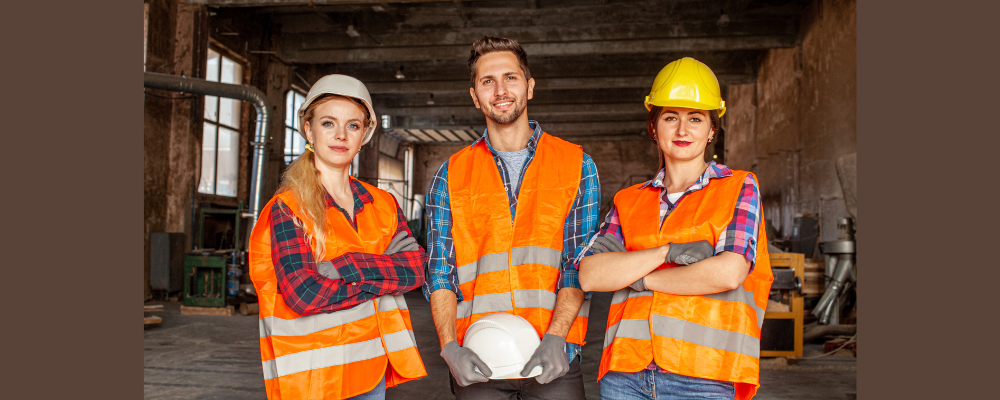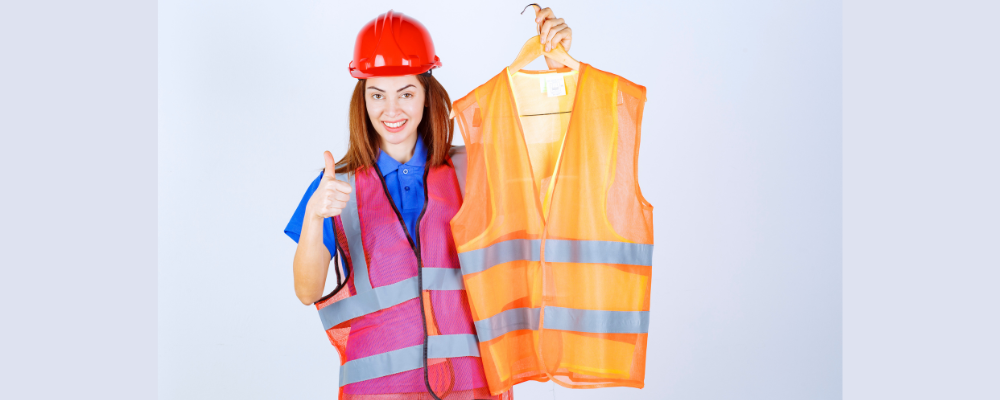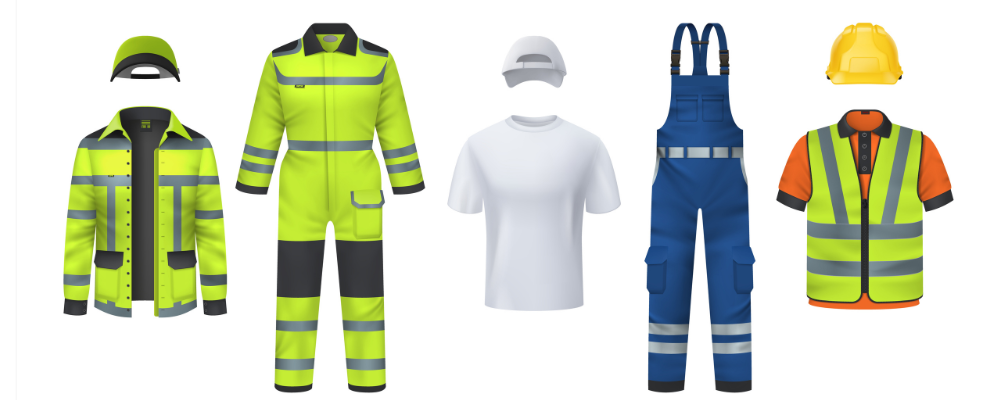
Introduction
Construction work demands specific attire to ensure safety, comfort, and productivity. In this guide, we’ll delve into the crucial clothing items every construction worker requires for optimal performance and safety on the job site.
Importance of Proper Clothing in Construction Work
Construction sites are a tapestry of challenges, where every step presents potential hazards. In this dynamic environment, the significance of proper clothing transcends mere aesthetics—it becomes the frontline defense against an array of risks.
Protection Against Physical Hazards: Construction work is fraught with physical dangers, from sharp objects to heavy machinery. Appropriate clothing, like the KX3 Ripstop Trousers, acts as a barrier against cuts, abrasions, and punctures, shielding the wearer from potential harm.
Enhanced Visibility for Safety: The vibrant hues of the Pocket Short Sleeve Yellow and VIZ-PRO Hi-Vis Yellow T-Shirt Yellow aren’t just fashion statements; they’re beacons of safety. High-visibility clothing significantly reduces the risk of accidents by ensuring visibility, especially in low-light conditions or amidst complex job site layouts.
Improved Comfort and Performance: Beyond safety, the right clothing contributes to the comfort and performance of workers. Clothing that facilitates movement, like the Short Sleeve Pocket T-Shirt, allows unrestricted motion, enabling workers to execute tasks easily and quickly.
Compliance with Safety Standards: Construction sites operate under stringent safety regulations. Proper clothing, meeting specific safety standards, ensures compliance, reduces the risk of regulatory violations, and fosters a safety culture.
Weather Protection: Extreme weather conditions can disrupt workflow and compromise worker well-being. Weatherproof clothing, designed to withstand rain, snow, or intense heat, ensures workers remain comfortable and focused on the task.
Choosing clothing for construction work is not just a matter of convenience—it’s a strategic decision that influences safety, productivity, and regulatory adherence. The selection of each garment is a meticulous consideration aimed at mitigating risks and optimizing performance in a demanding environment.
KX3 Ripstop Trousers: Ideal Gear for Durability and Flexibility
The KX3 Ripstop Trousers stand out as a prime choice for construction workers. Crafted with durable materials and designed for flexibility, these trousers offer:
- Durability: Resistant to tears and abrasions.
- Flexibility: Facilitating movement without compromising durability.
- Functionality: Multiple pockets for easy access to tools.
Pocket Short Sleeve T-Shirt Yellow: Comfort Meets Visibility
A comfortable yet high-visibility shirt is crucial on construction sites. The Pocket Short Sleeve T-Shirt in yellow provides:
- Comfort: Breathable fabric for long hours on-site.
- Visibility: High-visibility color for safety compliance.
Short Sleeve Pocket T-Shirt: Versatile and Functional
This shirt is a versatile addition to a construction worker’s wardrobe:
- Practicality: Equipped with pockets for convenient tool storage.
- Durability: Understands rigorous work environments.
VIZ-PRO Hi Vis T-Shirt Yellow: Ensuring Safety at All Times
The VIZ-PRO Hi Vis T-Shirt is a safety-focused garment that offers:
- Enhanced Visibility: High-visibility color for increased safety.
- Compliance: Meeting safety standards on-site.

Weatherproof Gear: Essential Clothing for Extreme Conditions on Construction Sites
Construction sites often face varying weather conditions, presenting challenges impacting workers’ safety and productivity. To ensure optimal performance and comfort, one must equip oneself with weatherproof gear tailored to extreme needs. This guide will explore the indispensable clothing options designed to withstand harsh weather, encompassing rain gear, insulated attire for cold climates, and breathable clothing suitable for hot environments.
Rain Gear for Wet Conditions:
Construction workers encounter rainy days that can impede work progress. To combat these challenges, investing in quality rain gear is imperative:
- Waterproof Jackets and Pants: Seam-sealed, waterproof jackets and pants protect against rain, allowing workers to remain dry and focused on the job.
- Water-Resistant Boots: Boots designed with waterproof materials and non-slip soles keep feet dry and secure on slippery surfaces.
Insulated Clothing for Cold Climates:
Working in cold climates demands adequate insulation to retain body heat and prevent cold-related injuries. Key items include:
- Insulated Jackets and Pants: Thermal jackets and pants with proper insulation trap heat while allowing freedom of movement.
- Layering Options: Utilizing the base, mid-layers, and outer layers helps regulate body temperature in fluctuating conditions.
Breathable Attire for Hot Environments:
Construction workers facing hot climates require clothing that provides ventilation and moisture-wicking properties:
- Moisture-Wicking Shirts: Clothing made from breathable fabrics that wick away sweat and keep workers cool and dry.
- Vented Workwear: Outfits designed with strategic ventilation, such as mesh panels, enhance airflow and comfort.
Extreme weather conditions pose significant challenges on construction sites, impacting worker safety and productivity and equipping oneself with weatherproof gear tailored to specific requirements, whether rain gear for wet environments, insulated clothing for cold climates, or breathable attire for hot weather. Construction workers can mitigate weather-related risks by investing in suitable clothing and performing efficiently under adverse conditions.
Protective Gear Beyond Clothing: Helmets, Gloves, and Eyewear
In the construction industry, ensuring worker safety goes beyond specialized clothing. Protective gear such as helmets, gloves, and eyewear are integral to a comprehensive safety ensemble. This discussion sheds light on the critical significance of headgear, gloves, and eye protection, emphasizing the standards, materials, and features crucial for ensuring safety and compliance on construction sites.
1. Helmets: Safeguarding the Head
Head injuries are a significant concern in construction. Helmets serve as the first line of defense against falling debris, impacts, or other hazards. They adhere to strict safety standards, typically meeting certifications such as ANSI (American National Standards Institute) or EN (European Norms). These helmets are constructed using durable materials like high-density polyethylene or fiberglass, designed to absorb and disperse impact energy. Features such as adjustable suspension systems ensure a secure fit for different head sizes while providing comfort during prolonged wear.
2. Gloves: Hand Protection for Dexterity and Safety
Construction workers handle various tools and materials, exposing their hands to potential injuries. Gloves tailored for construction work offer protection against cuts, abrasions, punctures, and chemical exposure. These gloves, compliant with standards like EN 388, are crafted from leather, synthetic fibers, or nitrile, providing both durability and dexterity. Some designs incorporate reinforced palms or impact-resistant padding to enhance protection without compromising the ability to handle tools effectively.
3. Eyewear: Shielding Vision from Hazards
Eye injuries are prevalent in construction due to airborne debris, dust, and flying particles. Safety glasses or goggles are fundamental in safeguarding vision. These protective eyewear pieces meet standards such as ANSI Z87.1, offering impact resistance and optical clarity. They come in various styles, including wraparound glasses and goggles, with anti-scratch and anti-fog coatings for enhanced durability and visibility. Some designs also have side shields for additional protection against peripheral hazards.
Prioritizing Safety Beyond Clothing
In conclusion, while clothing is essential to safety gear, helmets, gloves, and eyewear are indispensable in ensuring comprehensive protection for construction workers. Adherence to stringent safety standards, using durable materials, and incorporating specialized features are pivotal in manufacturing these protective gears, enhancing safety and compliance on construction sites.
By prioritizing the selection and use of appropriate helmets, gloves, and eyewear, construction workers can mitigate risks and work with greater confidence and security in hazardous environments.

Maintenance and Care Tips for Construction Workwear: Maximizing Longevity
Construction workwear endures rigorous conditions, making proper maintenance pivotal to ensure longevity and continued functionality. Employing the appropriate care techniques not only extends the lifespan of the clothing but also maintains its effectiveness in providing safety and comfort. Here are essential guidelines for maintaining construction attire:
1. Precautionary Measures Before Wear
- Inspect Regularly: Before wearing, inspect garments for tears, loose seams, or other damages. Repair or replace any compromised parts promptly to prevent further deterioration.
- Follow Manufacturer’s Instructions: Familiarize yourself with manufacturer guidelines regarding care, washing, and maintenance to ensure optimal upkeep.
2. Washing and Cleaning Guidelines
- Separate Workwear: Wash construction workwear separately from regular clothing to prevent contamination and address the specific needs of these garments.
- Use Appropriate Detergents: Choose mild detergents suitable for workwear materials. Avoid harsh chemicals that may degrade fabric quality.
- Temperature Consideration: Adhere to recommended washing temperatures. Hot water can help remove stubborn stains, but it may also cause shrinking or damage to certain fabrics.
3. Drying Practices
- Air Dry When Possible: Hang workwear to air dry whenever feasible. Avoid excessive dryer heat, which weakens fabric fibers and affects garment integrity.
- Follow Specific Instructions: Some specialized workwear may require unique drying techniques. Follow manufacturer guidelines for optimal results.
4. Storage and Maintenance
- Proper Storage: Store clean workwear in a dry, well-ventilated area to prevent mold, mildew, or odors. Hanging garments is often preferable to folding to maintain their shape.
- Repair Promptly: Attend to any damages immediately to prevent them from worsening. Patch up small tears or holes before they grow larger.
5. Maintenance of High-Visibility Clothing
- Retain Visibility: High-visibility clothing is crucial for safety. Avoid using bleach or harsh chemicals that might diminish the fabric’s high-visibility properties.
- Regular Inspections: To ensure continued visibility on-site, check for fading or wear on reflective strips and replace them if necessary.
By adhering to these maintenance and care tips, construction workers can significantly extend the lifespan of their workwear, preserving its quality, safety features, and comfort. Consistent attention to maintenance not only maximizes durability but also enhances the overall safety and effectiveness of the clothing.
For more information, visit our website and Facebook page.
For more products, visit our website :
Pocket Short Sleeve T-Shirt Yellow
KX3 Ripstop Trousers – Ideal for Construction Workers
Conclusion
Clothing stands as a linchpin in the realm of a construction worker’s daily rigors. It’s not merely about donning attire; it’s about donning the right gear that blends functionality, durability, and safety. The investment in quality attire, such as the KX3 Ripstop Trousers, Pocket Short Sleeve T-Shirt Yellow, Short Sleeve Pocket T-Shirt, and VIZ-PRO Hi Vis T-Shirt Yellow, is pivotal in establishing an environment where safety meets efficiency.
Ultimately, the proper clothing transcends its physical presence; it becomes an ally, a partner in navigating the challenges of construction work. It symbolizes a commitment to work and the well-being of those who build our world. As construction workers invest in these high-quality clothing options, they invest in their safety, their comfort, and their efficiency, thus laying the foundation for a safer, more productive construction environment.
In the tapestry of construction, where safety weaves itself intricately into every facet of the job, clothing emerges as a critical thread. It’s not merely about donning the gear—it’s about fortifying oneself with reliability, durability, and safety armor. The choice of clothing becomes a testament to the commitment to excellence, ensuring that every task is executed with precision and security at the forefront.









